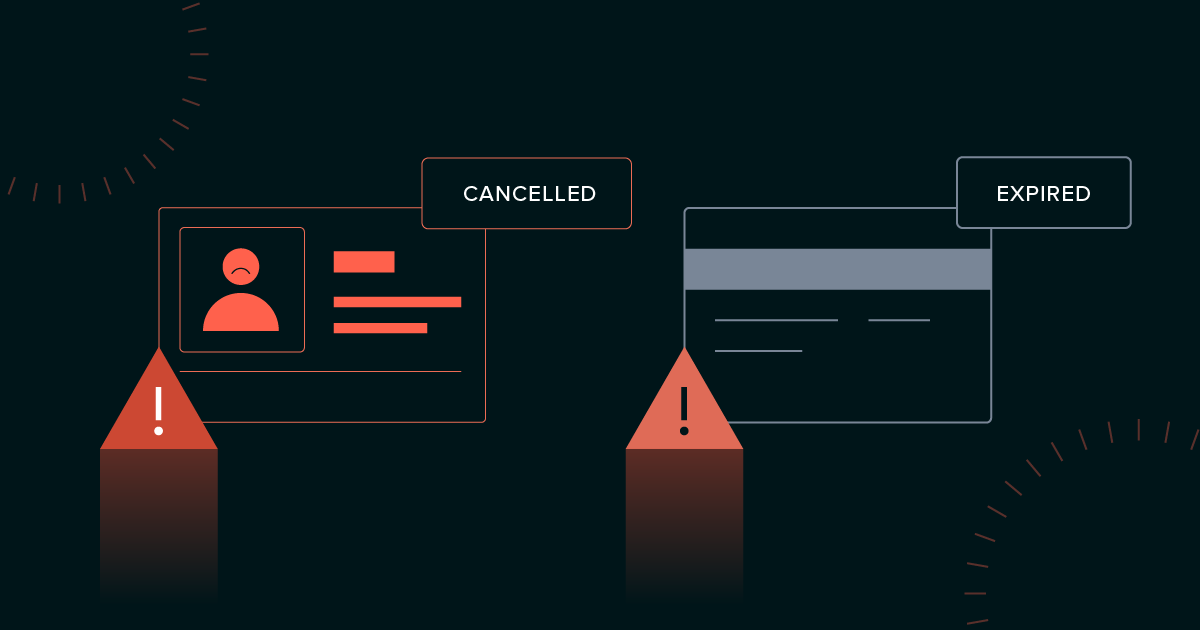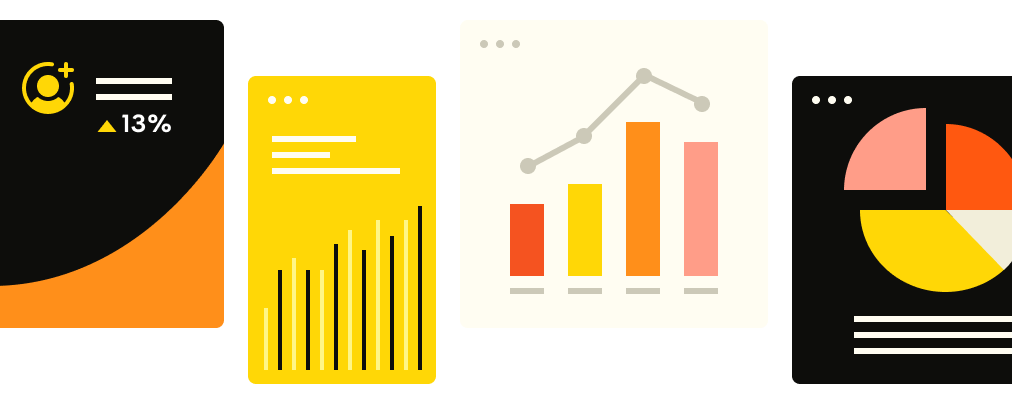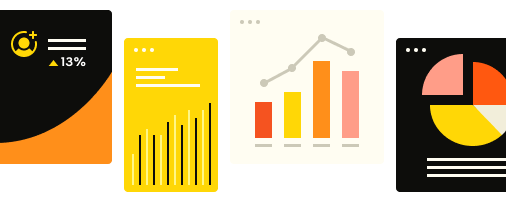Six data-based strategies for fighting involuntary churn

Getting smart about nurturing your customer base is a true competitive advantage for subscription businesses. Every subscription business should be aware of what churn is, the different types of churn, and how to offset your customer acquisition cost with a robust retention strategy.
To turn your churn around, you have to understand it first.
The importance of churn
Not all customer attrition is the same: voluntary versus involuntary churn is about whether the customer chooses to quit the service.
Voluntary churn happens when a customer cancels their monthly or annual subscription on purpose. Here are the top three reasons for voluntary churn:
No room for personalization in plans, billing, and payments
Not having a subscriber-centric mindset, and decisions aren't driven by customer satisfaction
No easy cancels–an FTC proposal to improve customer experience.
Involuntary churn occurs when the customer doesn’t want to cancel, but instead, it happens from any other factor–usually an unprocessed payment. Here are the top three reasons for involuntary churn:
Outdated information from a customer’s payment method
Unsuccessful payment retries
Ineffective dunning strategies to collect more payments

Naturally, you want to hold onto as many customers as possible for as long as possible. However, it's unreasonable to drive your team and company toward a 0% monthly churn rate. Churn is a fact of business. A percentage of customers will always self-select out of any opportunity.
Recurly’s churn rate benchmark report–compilling data from 1,500 sites over 19 months–shows that the average churn rate is 5.57% across businesses of all types and industries. Note that churn rates can vary significantly. For example, industries with highly competitive markets or lower customer switching costs may have higher churn rates than others.
Now, let's dive deeper into the two types of customer churn rates and how to prevent them.
How to manage involuntary churn
Did you know 53% of all customer attrition is involuntary churn?
More than half the time you lose a customer, it's because of an expired card, an insufficient funds error, or some billing issue completely unrelated to your product.
Involuntary churn is defined as customer attrition caused by any factor that isn't the customer's choice. What it means, though, is that your subscribers experienced billing or payment method problems.
Imagine your company is seeing an incredibly high failed transaction rate. Because of this, many invoices fail, enter dunning, and never get collected. Customers may not have the funds to pay or don't know how to update their payment information. Or even notice that they need to.
What can you do to fight this?
1. Leverage an account updater
Account Updaters allow you to access the most up-to-date credit card information, identifying cards at risk of failure and processing a successful transaction.
Our Account Updater service monitors your customers’ Mastercard, Visa, Discover, and American Express credit cards for changes, updating Recurly's records whenever necessary. It's like having a team in constant communication with credit card issuers.
2. Take advantage of payment retries
It’s impossible to keep up with all the types of credit card declines, especially if you're trying to do it manually. Automating transaction retries can help you recover soft declines when they’re most likely to occur.
For example, Recurly uses machine learning to leverage different days and times of day to retry cards, providing our customers with a much higher recovered invoice percentage.
3. Run automated dunning campaigns
Dunning is the process of sending subscribers an email reminder to collect overdue payments. An effective dunning strategy improves transaction success rates and offers control over subscriber communications that cover a topic as touchy as unsuccessful payments.
Sending dunning emails is important to get subscribers to update card information. Linking directly to an in-app ‘manage subscription’ page is also a best practice, as it ensures no friction in the update process.
When running a recurring revenue business, you’re constantly processing payments. Fighting involuntary churn means having comprehensive decline management, which consists of the ability to communicate based on failed transactions and the ability to try cards after the initial failure.
Watch on-demand: Dunning: 5 dos and don'ts to minimize subscriber churn
How to manage voluntary churn
Voluntary churn happens when customers start the exit; maybe they're unhappy with the product or not receiving the value they thought they would. Without significant resources dedicated to customer success, you may lose customers because a bad experience.
Imagine you're looking at your Recurly dashboard, specifically the Subscriber Retention report. What you notice is high churn rates around month two.

Your customers tend to make two monthly subscription payments and then cancel. After some surveys, you discover customers are concerned with pricing.
What proactive customer retention tactics can you deploy?
1. Offer plan and pricing flexibility
Let customers design their own product and personalize their plans with add-ons, upgrades, renewal frequency options, or bundles. Consider encouraging even longer-term plans at checkout, discounted rates, and fewer renewal cycles. Give your customers fewer decision points about keeping their subscription to reduce revenue churn opportunities.
2. Allow pausing subscriptions
Cancellation is churn, but that doesn't mean you can't create a friendly journey. Complex customer journeys can seriously damage the experience. Subscribers don't want to feel like you're making it impossible to end their plans.
Often, customers simply look for a short-term break to deal with factors beyond their control. Make sure they have options beyond canceling with a pause option, which has proven to increase customer retention rates.
Does pausing subscriptions offset revenue recognition? It can have an impact depending on the accounting method you use and the specific terms of the subscription agreements.
Note that if revenue is deferred during a pause, it will appear as a liability on the balance sheet. When services resume and revenue recognition criteria are met, the deferred revenue is recognized as revenue on the income statement.
Revenue recognition in subscription businesses can be complex, and it's governed by accounting principles such as ASC 606 and IFRS 15. Learn more about revenue recognition for subscription businesses.
3. Build community and loyalty
Increase emotional engagement and reward loyal customers by creating a sense of belonging. Leverage an omnichannel approach to remind them of the value your product delivers. Twitch Recap and Spotify Wrapped are excellent examples of how digital brands are building strong communities.
In a nutshell, reducing voluntary churn means understanding your subscribers' behavior, motivations, and preferences.
Study your customers and churn data. Identify how subscribers at risk of churning behave. Pay close attention to what you can offer to address their needs.
Get actionable insights to reduce voluntary and involuntary churn
Churn is inevitable in subscription services, impacting monthly revenue and growth rates. However, there are clear drivers of both voluntary and involuntary churn and effective responses you can start applying today.
Decreasing churn requires a two-path approach, with targeted processes and strategies based on a thorough understanding of what drives churn. Marketing and growth leaders want to know the latest churn rate benchmarks and how these numbers impact the trajectory of the subscription industry.
Recurly has compiled the data of over 2,200 leading subscription brands to inform your churn management strategy.
Check out The State of Subscriptions report to get the most recent trends, their overall impact in the industry, and Recurly’s impact on our customers’ churn.


